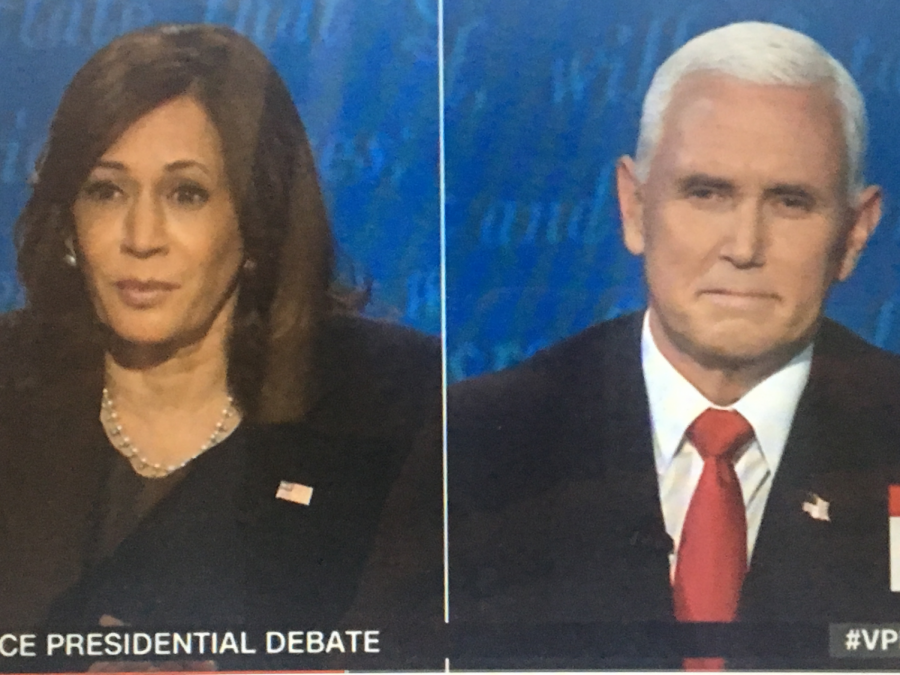The Transformation of the Vice Presidency
How the office gained power after starting out as a constitutional afterthought, and where it stands today.
Many claim that the Vice Presidential debate between Kamala Harris and Mike Pence on October 7th, 2020, was more important and more informative than the Presidential Debate that occurred two weeks prior. “The Vice Presidential debate seemed much more substantive and less of a performance,” said William Freedman ’21.
Four years into his vice presidency in April 1793, John Adams sat at his desk writing a letter to his wife. I picture him hunched over, quill stabbing into the page as he describes the job of the vice president as “the most insignificant office that ever the invention of man contrived or his imagination conceived.”
He may have been the first person to ridicule the position, but he was far from the last. Thomas Marshall, who served from 1913 to 1921 as Vice President under Woodrow Wilson, teased, “I don’t want to work, but I wouldn’t mind being vice president again.”
“The Constitution doesn’t give the vice president much to do,” said Joel Goldstein, a law professor and author of The White House Vice Presidency: The Path to Significance, Mondale to Biden.
Created at the very end of the 1787 Constitutional Convention, the role of Vice President was an afterthought. “The Vice Presidency was probably created to help make the presidential election system work, not because it was otherwise needed,” said Goldstein. After rejecting their original Vice President-less plan due to fears of governmental gridlock, the founders devised a new system where the candidate with the second-most votes would become Vice President. This person’s job would be to moderate the Senate, oversee Electoral College counting, and supervise impeachment trials.
There were several problems with this system, most notably, that as political parties emerged, Vice Presidents began actively working against the President because of their opposing political beliefs. The immediate replacement, a system of running mates, was not much better. In 1801, Thomas Jefferson and Aaron Burr received the same number of Electoral votes for President, creating the very gridlock that the founders had attempted to avoid.
As a result, in 1804, the parties passed a new amendment in order to sort out this confusion. “The 12th Amendment to the Constitution replaced the founders’ not ‘excellent’ system with one whereby electors voted separately for President and Vice President,” said Goldstein. Although the 12th Amendment resolved some of the structural problems facing elections, the position of the Vice President remained vaguely defined and relatively insignificant throughout the nineteenth century.
This began to change in the twentieth century, starting with President Franklin D. Roosevelt. FDR invited all three of Vice Presidents throughout his four terms to cabinet-level meetings, which was unprecedented at its time. Later, President Dwight D. Eisenhower included his Vice President, Richard Nixon, in meetings and important assignments, so that he would be prepared to assume the Presidency if necessary. Walter F. Mondale and Jimmy Carter further transformed the position in 1977, creating the “modern Vice President” that we know today.
The Vice President now functions as a member of the President’s inner circle, in addition to leading commissions, traveling abroad, and taking over any of the President’s duties if need be. Former President Barack Obama’s description of his Vice President, Joe Biden (now President Elect), as “the last one in the room whenever I faced a big decision,” is a long departure from the purely legislative roles of early Vice Presidents. “The framers never would have imagined the Vice Presidency as we know it today,” said Goldstein.
The position of the Vice Presidency has become particularly significant recently, as Kamala Harris became the first woman, Black person, and South Asian American to be elected Vice President once her term begins on January 20th, 20201. In addition, as Vice President to the oldest elected president in American history, her constitutional duties of replacing a deceased or incapacitated president are highly relevant.
It is clear that Vice Presidential power has grown over the last century, but how much sway does a Vice Presidential candidate have in an election? Furthermore, even if Vice Presidents have become more important, how influential should they be? Were the founders right in limiting their responsibilities, or are they still underused? These and other questions persist as the role of the Vice President continues to evolve.
“The framers never would have imagined the vice presidency as we know it today,” said Joel Goldstein, a law professor and author of The White House Vice Presidency: The Path to Significance, Mondale to Biden.
Yona Litwin is a Copy Chief for ‘The Science Survey.' He enjoys the fact that journalistic writing is driven by a variety of voices, and that a single...











